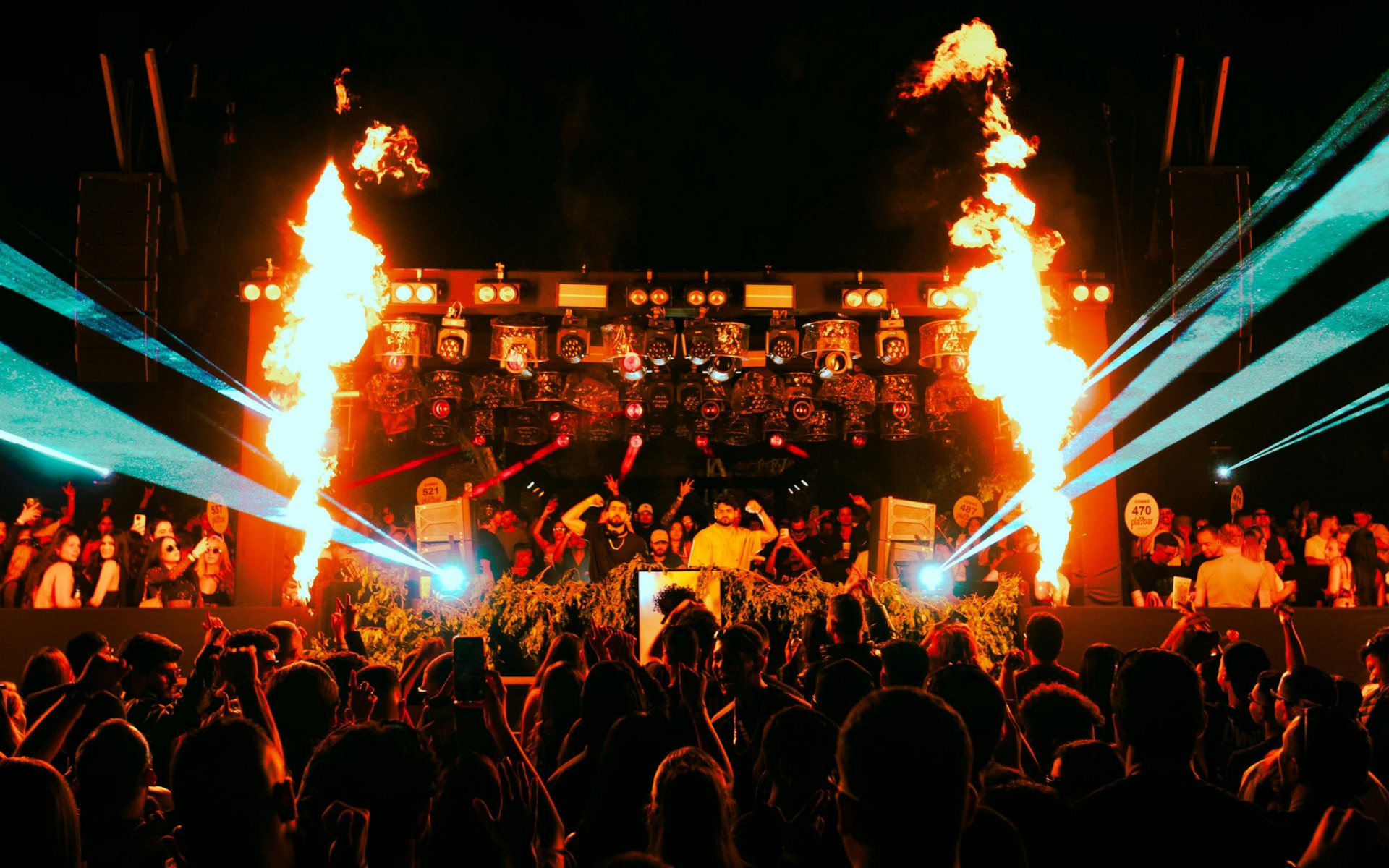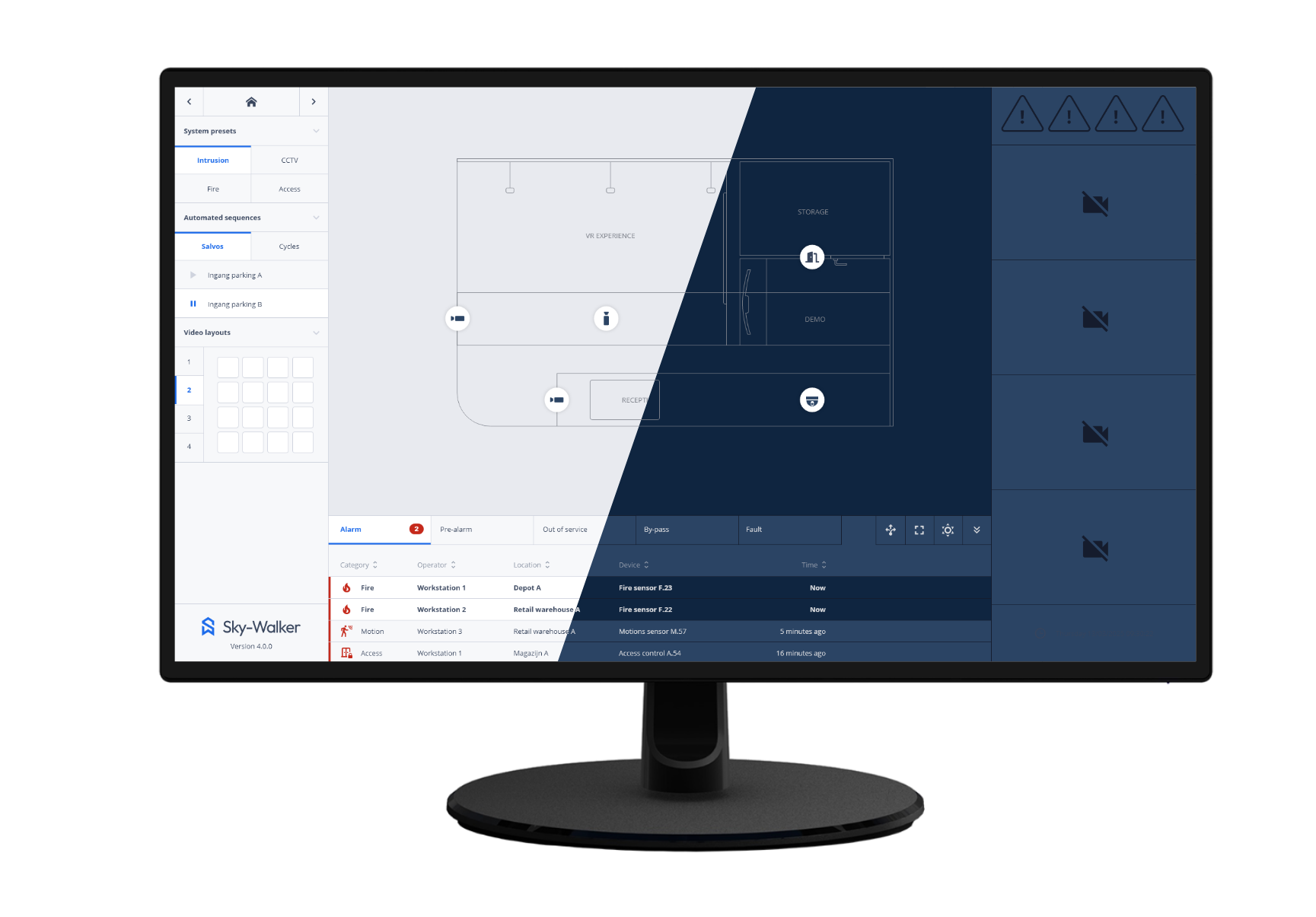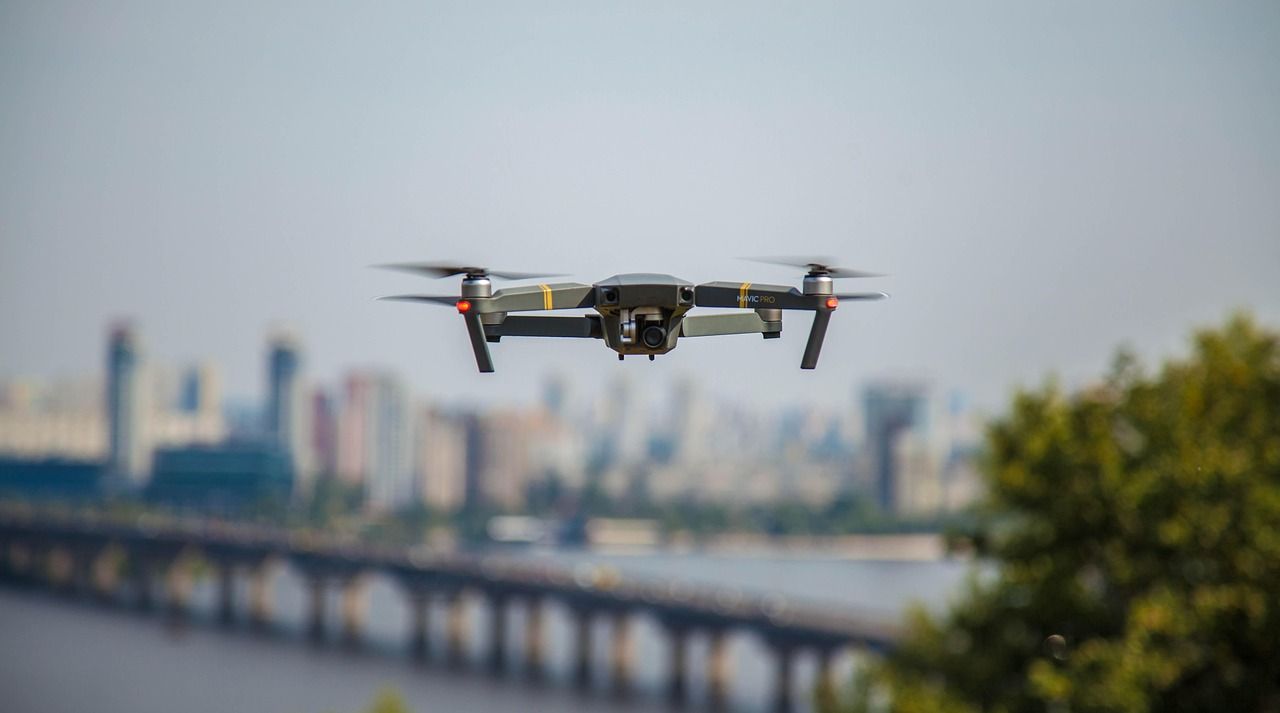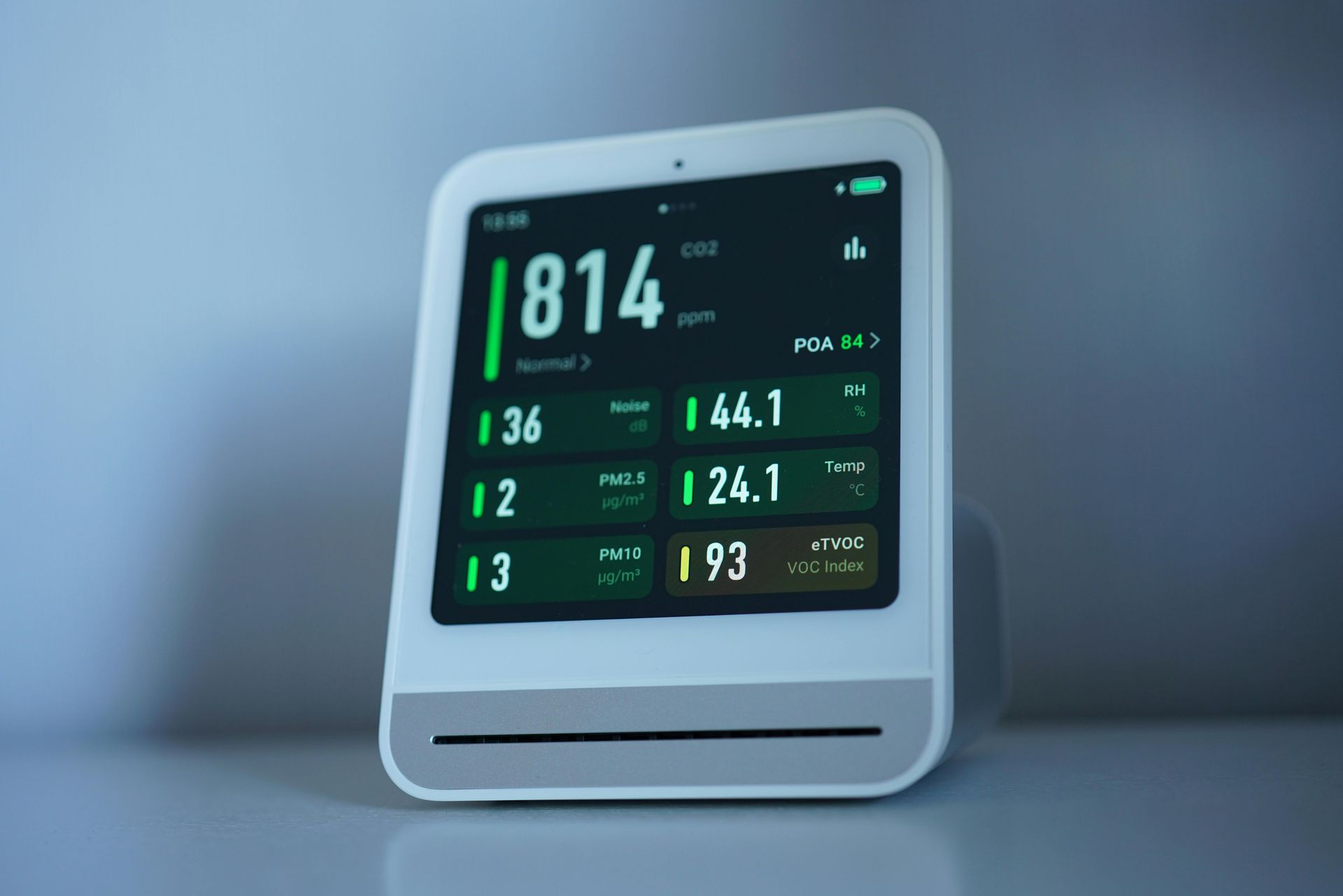5 Security threats for events in 2025
Introduction
From festivals to exhibitions, every large scale event faces unique safety challenges. Crowds, digital payments, and open environments make them vulnerable to both physical and cyber risks. A single overlooked incident can quickly escalate into chaos, affecting not just visitors but also staff and reputation.
In this article, we take a closer look at
the five most common security threats at events.

1. Unauthorized access & weak access control
In recent months, several events and exhibitions have been disrupted by unexpected activist actions, causing damage and putting both visitors and staff at risk. In other situations, people try to climb over fences or enter without a ticket, creating safety concerns and crowd management challenges.
These incidents show how important it is to have proactive security and smart monitoring in place. With advanced systems like Sky Walker, teams can oversee the entire venue from a single screen. When unusual movement or unauthorized access occurs, the relevant camera feed is automatically highlighted so staff can react immediately before the situation escalates.
Effective prevention is not about having more screens but about having the right information at the right moment. Visibility, control and quick action make all the difference.
2. Overcrowding / crowd crush
In many event control rooms, you often see security teams monitoring dozens of screens at once, each showing a different camera feed. It looks impressive, but in practice it can be overwhelming. When something happens, valuable seconds are lost switching between cameras to find the right view.
With Sky-Walker, that changes. Instead of juggling multiple monitors, the system uses one screen that automatically highlights the area where an issue occurs. If overcrowding develops at an entrance or exit, the relevant camera instantly appears and is clearly marked.
This smart approach not only improves situational awareness but also helps teams react faster and prevent crowd incidents before they escalate.
3. Violent incidents / active attacker
Violence at public gatherings is unfortunately not a new risk. A car was recently driven into a crowd at a Christmas market in Magdeburg, Germany, killing multiple people and injuring hundreds (source). This incident painfully recalls earlier attacks on Christmas markets across Europe, including in Berlin, Strasbourg and other cities. It shows that even traditionally festive venues can become targets.
Events must be prepared for threats beyond crowd mismanagement or unauthorized access. Acts of vehicle ramming show that attackers may exploit weak perimeter defenses, emergency escape routes or gaps in barrier protection. To prevent this, event security strategy needs to be multi layered and proactive.
How can we reduce the vulnerability to such attacks?
- Use physical barriers such as bollards and fixed posts to stop vehicles from entering pedestrian zones.
- Ensure that all emergency access routes are secured and monitored, not left open as weak points.
- Maintain real time situational awareness and clear escalation procedures that allow security teams to act within seconds.
- Coordinate closely with local police and emergency services to ensure a fast and effective response.
Prevention is about anticipating how methods of attack evolve and ensuring that defenses adapt accordingly. As tragic events such as Magdeburg remind us, security systems must provide both visibility and control now that matters most.
4. Cybersecurity & payment fraud
Digital payments have become an essential part of the festival experience. At large events like Tomorrowland, the entire payment system is built around convenience and speed. Visitors no longer need to carry cash, cards or drink tokens. Everything runs through their personal Tomorrowland bracelet.
Before or during the festival, guests use the Tomorrowland app to top up their balance. The money is converted into Pearls, the festival’s digital currency, which is then linked directly to the bracelet. Each bracelet contains a small RFID chip that connects to the visitor’s profile. When buying food, drinks or merchandise, guests simply tap their wristband against a payment terminal, and the amount in Pearls is deducted instantly.
It is a smooth and user-friendly system, but it also highlights an important reality: every digital convenience introduces potential cybersecurity risks. Each transaction involves sensitive data such as payment details, personal profiles and sometimes even location information. If this data is not properly secured, it can be exposed to hacking, cloning or unauthorized access.
To prevent fraud and data breaches, festivals must ensure that their payment systems are encrypted and isolated from public networks. Guest Wi-Fi, staff systems and payment terminals should never share the same connection. Vendors should also be trained to recognize suspicious activity, and festival organizers must work only with PCI DSS compliant payment providers to ensure the highest security standards.
Visitors can also play their part by topping up their bracelets only through the official Tomorrowland app or website and avoiding third party links or unofficial vendors.
Digital innovation has made festivals more immersive and seamless than ever, but trust is built on security. Protecting personal and payment data ensures that the experience stays as magical as the music.
5. Medical incidents & health risks
Ensuring the safety of attendees at large-scale events is more important than ever. Festivals, concerts, and public gatherings face a variety of risks, from medical emergencies to unexpected security threats. Effective communication can make all the difference in managing these situations and keeping people safe.
Modern solutions, like emergency message systems tested at Pukkelpop,
allow organizers to send real-time alerts directly to screens, apps, or mobile devices across the event grounds. These systems ensure that critical information reaches attendees instantly, enabling them to react appropriately and reducing the likelihood of panic or confusion.
Integrating such technology into event planning demonstrates a proactive approach to safety. Whether it’s guiding people to safe zones, communicating medical alerts, or providing instructions during unexpected incidents, real-time emergency messaging is now an essential part of responsible event management.
Read more about it here: Emergency message system tested out at Pukkelpop
Sky-Walker: Real-time event security for safer, smarter venues
Ensuring the safety of attendees at large events is a complex challenge. From crowd surges and unauthorized access to cyber risks and emergencies, organizers need a comprehensive approach to risk management. This is where Sky-Walker comes in.
Sky-Walker is an advanced monitoring and control platform that provides event organizers with real-time situational awareness across the entire venue. Instead of juggling dozens of screens, security teams can monitor everything from a single interface. When a threat is detected, whether it’s overcrowding, someone attempting to climb a fence, or an unusual movement in a restricted zone, the relevant camera feed is immediately highlighted, allowing staff to respond instantly.
In addition to physical security, Sky-Walker can integrate with digital systems such as cashless payment bracelets, apps, and access controls. This ensures that sensitive information, such as personal data or cashless payment balances, is monitored and protected against fraud or misuse.
Sky-Walker also complements emergency communication systems, such as those tested at Pukkelpop, by providing live situational updates that help staff coordinate rapid responses to any incident, from medical emergencies to security breaches.
By combining crowd monitoring, access control, digital security, and real-time alerts, Sky-Walker empowers organizers to prevent incidents before they escalate, respond more effectively during emergencies, and create a safer environment for all attendees.

Want to see Sky-Walker in action?








 Download Product Ebook
Download Product Ebook View all our solutions
View all our solutions Sky-Walker Architecture
Sky-Walker Architecture View all our integrations
View all our integrations Book Protocol workshop
Book Protocol workshop Our Company
Our Company Contact Us
Contact Us View All Our Case Studies
View All Our Case Studies Become a PSIM Partner
Become a PSIM Partner Become a Sky-Walker PSIM partner today!
Become a Sky-Walker PSIM partner today! English
English Français
Français Nederlands
Nederlands






